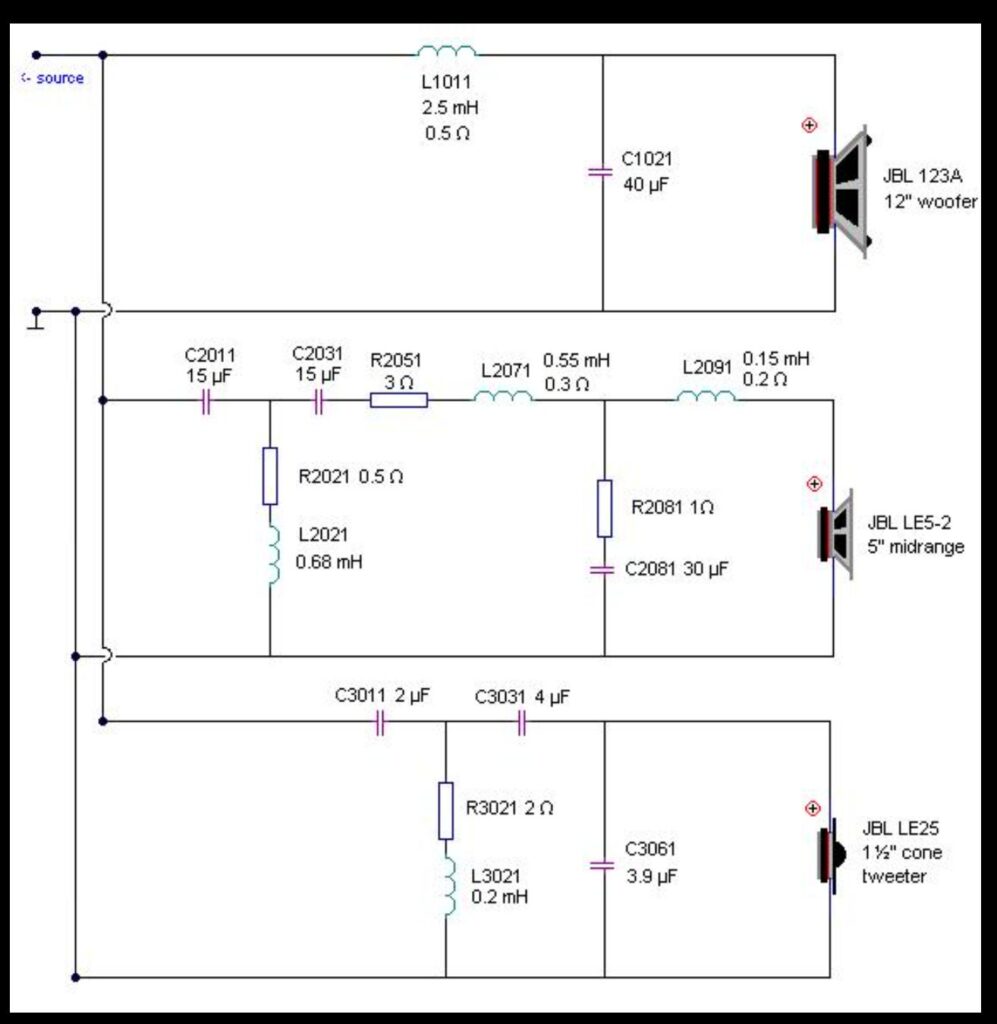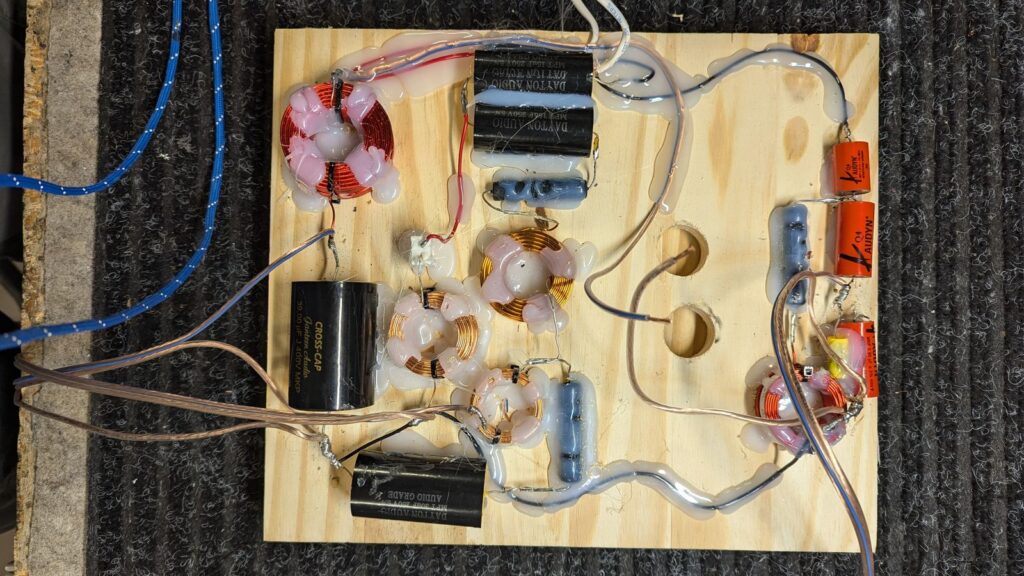A Complicated Crossover
Jan 10, 2025
A customer brought me a pair of vintage JBL L-100’s and requested that I replace the original, very simple crossover with something entirely different. He directed me to a discussion forum where this sophisticated device was posted, along with rave reviews from some L-100 owners who had incorporated it into their speakers. Could I provide this service for him? Of course! All I had to do was assemble the components as indicated in the schematic and install it in the cabinet!
Famous last words. Here’s the schematic:

It “only” took a few hours for me to figure out how to arrange everything, but then came the testing phase, and I was a little taken aback by the wild variations in impedance and response at various frequencies in the audible range. Whoever designed it, I reasoned, must have done that on purpose to compensate for nonlinearities in the speakers themselves, so the result would be a smooth, detailed output. But one thing bothered me about the design: at frequencies above about 12khz, the response rolled off rapidly, so that by the time I got to 20khz, the output was negligible. Granted, most people “of a certain age” can’t hear much in that frequency range, but I couldn’t just dismiss such an obvious flaw.
I was not at all inclined to redesign the crossover and I sure wasn’t going to give up and walk away from the project, but as I pored over the schematic I realized there was one simple change I could make that might, might, resolve the issue. Directly across the tweeter connections is C3061, a 3.9uf capacitor. In a blinding flash of the obvious, I realized that capacitor could be changed to a smaller value, thus reducing the attenuation of the higher frequencies without affecting the operation of the T-filter consisting of C3011, C3031, R3021, and L3021. So I changed it to a 1uf and the difference was astounding!
Granted, the result might be that frequencies above 12 khz are unduly emphasized, but here again, for people “of a certain age,” that would be a good thing! Besides, the L-100 has level controls for both the midrange and the tweeter, so if the highest highs were a bit on on the “high” side …
Here’s what the crossover looks like, mounted on a 1×12 board, ready to install in the cabinet:
